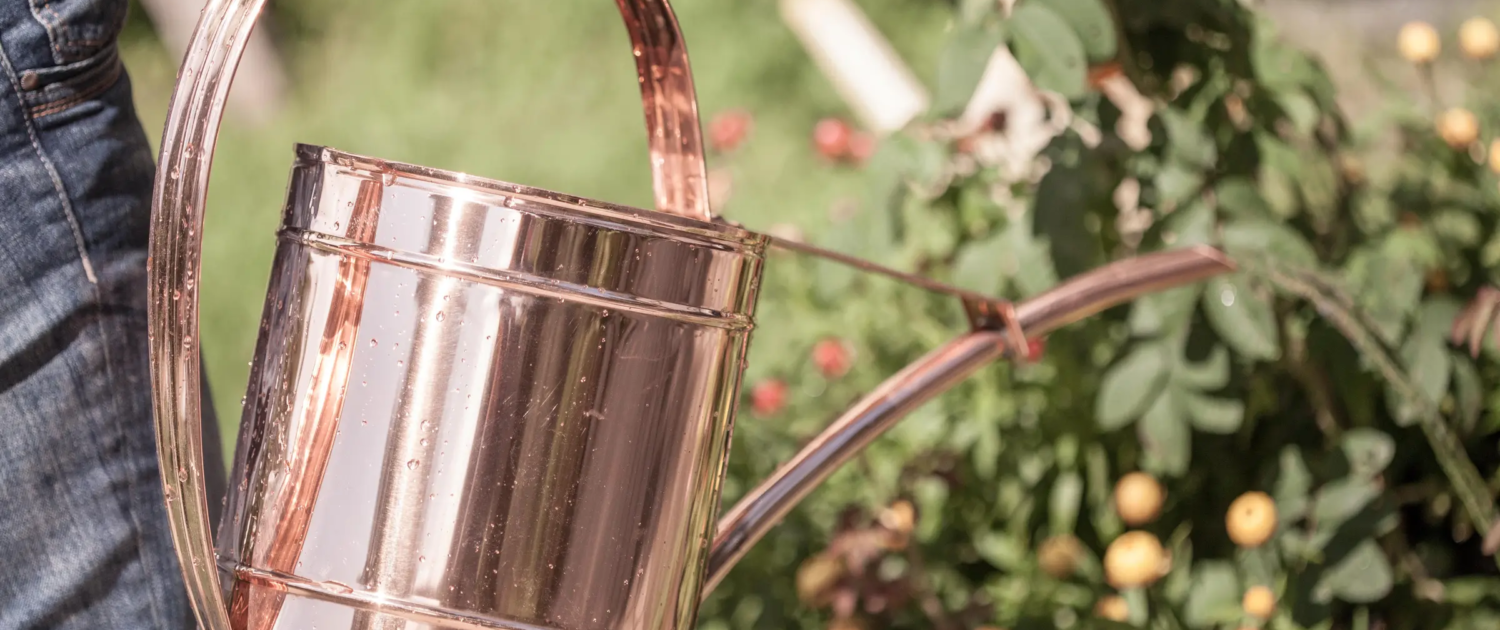Copper tools and growth
Copper and copper tools promote plant growth
Copper is essential for the normal, healthy growth and reproduction of all higher plants and animals.
The consequences of a copper deficiency range from a reduction in yield of up to 20% – which can occur in many crops as a result of a hidden copper deficiency without any visible symptoms – to the complete loss of the harvest.
Copper deficiency has been observed all over the world and in all climatic zones where crops are grown. The occurrence of copper deficiency varies with the soil and the crops grown. A deficiency can occur particularly in plants grown on sandy soils, on soils with a high organic matter content and on calcareous soils.
Biological systems utilize the ability of copper
- to accept and transfer electrons and thus participate in oxidation/reduction reactions,
- form complexes with organic compounds. If these metabolic pathways are interrupted as a result of a copper deficiency or sometimes even a surplus, growth, yield and quality are impaired.
Copper in the soil
The total copper content of soils is made up of five factors:
- Soluble forms in the soil solution – is immediately available to plants.
- Stable, organic complex compounds in humus – not available to plants.
- Copper sorbed by hydroxides of manganese and iron.
- Copper sorbed on the clay-humus complex.
- The copper bound in the crystal lattices of the soil minerals is only released during weathering.
The total amount of water-soluble and exchangeable copper is often very low, although the total concentration of copper in the soil can be considered sufficient (over 10 mg/kg for mineral soils and over 30 mg/kg for organic soils)
The parent material of a soil can vary considerably in copper content, with dark shales usually having a high concentration and sandstones a low concentration.
The availability of copper for uptake by plants is mainly determined by the p-H value of the soil, its organic matter content and its sorption capacity.
Typical copper-deficient soils are mainly sandy soils, peat, soils with more than 7 to 10 % organic matter and calcareous soils.
The total copper content and the content of available copper in the soil can differ considerably in some places.
In horticultural growing media with a high peat content and in pure peat growing media, a sufficient supply of copper should not be underestimated.
Copper deficiency has been reported in over 50 plant species and in 51 countries.
Copper and plant nutrition
The presence of latent deficiency, whereby crop yields are reduced without clear symptoms appearing, is illustrated by the following significant increases in yield caused by copper obtained in replicated field trials:
- Yield increase of 22.4 % for spring barley on brown soil with a sandy texture
- Yield increase of 13.5 % for winter wheat on mullrendzina
- Yield increase of 18 % for sugar beet on brown soil with a sandy texture
- Highly significant additional yield for gerbera in peat
In addition to reducing yields, copper deficiency can have a negative impact on the quality of many crops.
Examples of quality reductions due to copper deficiency are
- Citrus fruits, less appealing appearance, reduced fruit size
- Onions, poorly colored and spongy
- Carrots, poorly colored
- Lettuce, poorly colored and wilted
- Pears, cork formation and cork staining
Copper in the plant’s metabolism
Copper is a component of various enzymes and other proteins, where it is mainly responsible for electron transfer in key metabolic pathways. As with other trace elements, metabolic processes are disrupted by both too little and too much copper.
Photosynthesis, respiration, reproduction, protein formation, lignification, auxin regulation, resistance to diseases and other plant functions can be affected by copper deficiency.
The absorption of copper via the roots can be reduced by relatively high concentrations of calcium, potassium and ammonium ions.
Heavy nitrogen fertilization delays the ageing of the leaves and thus reduces the amount of copper that can be distributed to young tissue.
Various vegetables grown around the world are highly sensitive to copper deficiency.
If copper has accumulated in the soil over many years as a result of emissions, phytotoxicity sometimes occurs, but this can usually be remedied by liming.
Symptoms of deficiency
Copper deficiency impairs lignification and thus leads to tissue collapse, especially in young leaves, which initially look as if they are wilting and later become necrotic.
Leaves are often twisted and deformed.
Copper is normally only transferred from old to young tissue to a limited extent. Accordingly, symptoms usually show up first in young tissue.
Examples:
- Lettuce, the leaves lack firmness, they look like rabbit ears, young leaves curl up in a key shape
- Spinach, the edges of the young leaves, which have a dirty color, wilt and curl up
- Tomato, leaves and stems lack firmness, leaves are small, hard and folded together, the leaflet stalks are bent downwards in a typical manner
- Onion, the tips of the youngest leaves first become chlorotic and then white, they twist into a spiral or bend so that they are at right angles to the rest of the plant, the onion skins are thin and pale yellow
Excerpt from the DKI reference book “Copper in agriculture”
Publisher: German Copper Institute
The original edition was published under the title “Copper in Plant, Animal and Human Nutrition”, text by Dr. V.M. Shorrocks and Dr. B. J. Alloway
